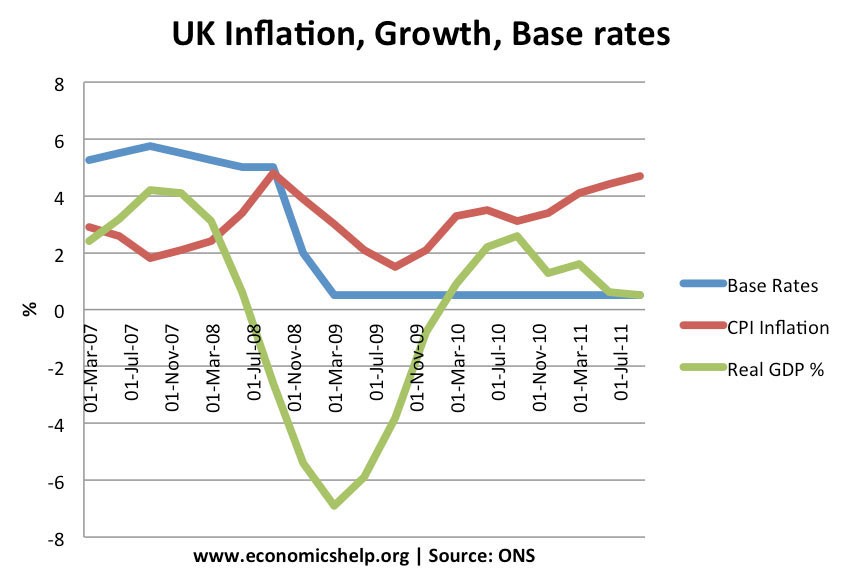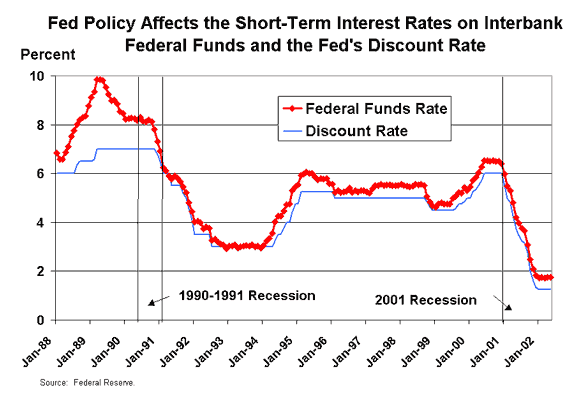Monetary Policy
Post on: 15 Июль, 2015 No Comment

OUTLINE
- REVIEW: The Money Market Graph
- Money Demand
- asset demand
- transactions demand
- total money demand
The first thing we need to do is to develop another graph: the money market. Then we will add this new graph to two other graphs and we will have to use THREE GRAPHS TO SHOW HOW MONETARY POLICY WORKS:
Expansionary Monetary Policy: Increasing the MS to decrease UE:
Contractionary Monetary Policy: Decreasing the MS to decrease IN:
The extra credit question for exam three will include a short new article like the ones linked at the top of this lecture and you will have to (1) decide which monetary policy tool the Fed is using, (2) SHOW the effects of that monetary policy on these three graphs. and (3) discuss what happens to UE, IN, and EG.
REVIEW: The Money Market
So, what is that first graph?
Money Demand
What is it?
- MD is our demand for liquidity
- it is our demand to keep some of our wealth in our wallets, purses, and checking accounts
- it is NOT a request for higher wages at work
The Demand for Money: Two Components
There are two sources of money demand or two reasons why do we want to hold M1 money in our wallets, purses, and in our checking account, instead of putting it in the back to earn interest. They are the (1) transactions demand and the (2) asset demand. The (3) Total demand for money (keeping money in our wallets and not in our savings account where they can earn interest) then is the transactions demand plus the asset demand.
Transactions Demand for Money

Definition:
- We keep M1 money in order to buy things
- It is the demand for money as a medium of exchange
Transactions demand and nominal GDP
- directly related: when GDP increases the transactions demand for money also increases (shifts to the right).
- the main determinant of transactions demand is nominal GDP
Transactions demand and interest rates
- we’ll assume that they are unrelated, so on a graph the transactions demand looks like:
Graphically
Asset demand
Definition:
- we keep some money so that we can spend it later
- the demand for money as a store of value
What determines how much money (M1) we keep in our wallets, purses, and checking accounts?
- The problem with holding money: is that you are not earning interest on it
- Asset demand and interest rates are inversely related
- if interest rates are high, people will keep less in their pockets and more in their savings accounts (and in other interest earning assets)
- if interest rates are low, people will keep more money in their pockets, because they are not losing much and it is more convenient
Therefore, graphically, the asset demand for money looks like:
According to this graph, if interest rates on savings accounts are 10%, the quantity of money that we STORE in our wallets and checking accounts will be zero. Note: we would still keep some to buy things (transactions demand).
Total Money Demand
- Total MD = transactions demand + asset demand
- Graphically: The black vertical D1 is the transactions demand and the black, downward sloping D2 is the asset demand. If we add them together we get the blue total demand for money.
The Market for Money: Interaction of Money Supply and Demand
Now lets add the MS (money supply) graph from chapter 14. The graph below and textbook’s Key Graph 16.1c illustrates the money market. It combines demand with supply of money.
If the quantity demanded exceeds the quantity supplied, people sell assets like bonds to get money. This causes bond supply to rise, bond prices to fall, and a higher market rate of interest.
If the quantity supplied exceeds the quantity demanded, people reduce money holdings by buying other assets like bonds. Bond prices rise, and lower market rates of interest result (see example in text).
The Money Market
Graph:
The equilibrium interest rate then is where the MS an MD graphs cross. Now we can use the graphs to see how monetary policy works:
Expansionary monetary policy used to fight unemployment (UE):
- MS Interest Rates I AD (MEMORIZE THIS!)
- Now we can show this on a graph.
- NOTE: Many students, for reasons that I do not understand,often get this order of changes backwards. FIRST, see #1 in the graph above, the MS increases, THEN, see #2 in the graph above, the interest rate decreases. The increase in the money supply CAUSES the interest rate to go down. Not the other way around.
- Note the order:
- First the MS increases (1) which CAUSES
- the interest rate to decrease (2) which CAUSES
- the amount of investment to increase (3) (the graph does not shift), this CAUSES
- AD to increase (4) which CAUSES two things:
- real GDP increases (5) causing UE to go down, and
- the price level rises (5) cause a little inflation
This is a cause and effect chain of events. You must get the order right! The arrow go in only one directions.














